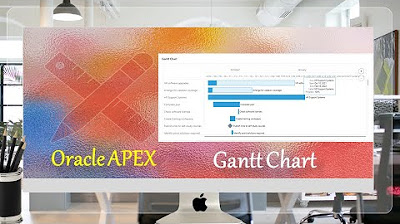What Is a Gantt Chart, & How Does It Work? | Coffee with Brett
Summary
TLDRIn this episode of 'Coffee with Brett,' the host introduces Gantt charts, a popular project management tool created by Henry Gantt. The video explains how Gantt charts visually represent project timelines, breaking down tasks, deadlines, and responsibilities while simplifying complex projects. Brett emphasizes the importance of using Gantt charts for managing projects with hard deadlines, multiple team members, or intricate task dependencies. The episode encourages viewers to utilize Gantt charts for better organization and communication, ultimately promoting successful project delivery. Listeners are invited to engage with the content, subscribe for updates, and explore more resources at TeamGantt.
Takeaways
- 😀 Gantt charts are essential project management tools that visually represent project timelines.
- 📅 The name 'Gantt chart' originates from Henry Gantt, who popularized the concept, although it was initially developed by Adamiecki.
- 🔍 Gantt charts break down projects into tasks, helping teams understand their responsibilities and deadlines.
- 📊 The chart displays time on a horizontal axis and tasks on a vertical axis, with bars representing task durations.
- 🔗 Dependencies between tasks are visually indicated, showing the order in which work must be completed.
- ⏳ Gantt charts are useful for managing projects with hard deadlines by organizing tasks and approvals effectively.
- 🤝 They facilitate coordination among multiple teams, providing a single reference document for project tracking.
- 🌟 Gantt charts offer a visual timeline for stakeholders, making it easier to communicate project status.
- ⚙️ They help manage complexity in projects by clearly outlining task orders and timelines.
- 💼 Gantt charts assist in workload management, allowing teams to balance tasks across various projects.
Q & A
What is a Gantt chart?
-A Gantt chart is a horizontal bar chart used in project management to visually represent a project plan over time, breaking down tasks and showing their durations.
Who popularized the Gantt chart?
-Henry Gantt popularized the Gantt chart, although the original concept was developed by Adamiecki.
What are the main components of a Gantt chart?
-The main components include a timeline on the horizontal axis, tasks or phases listed on the vertical axis, and bars representing the duration of each task.
How does a Gantt chart help with project management?
-It helps manage projects by providing a visual overview of tasks, deadlines, dependencies, and progress, making it easier to track and communicate responsibilities.
What is the significance of task dependencies in a Gantt chart?
-Task dependencies indicate the order in which tasks should be completed, ensuring that work flows logically and efficiently.
When should you use a Gantt chart for project management?
-You should use a Gantt chart when managing projects with hard deadlines, multiple teams, task complexities, or when needing to visualize timelines for stakeholders.
What features does TeamGantt offer beyond basic Gantt charts?
-TeamGantt includes features like time tracking, workload planning, communication tools, and reporting capabilities.
Why are milestones important in a Gantt chart?
-Milestones represent significant events or deadlines in a project, helping teams track progress and ensuring key approvals or meetings occur on time.
How does a Gantt chart enhance team collaboration?
-By providing a single, up-to-date visual reference for project tasks, a Gantt chart helps keep all team members aligned and informed about project progress and responsibilities.
What should you do if project tasks change or progress updates occur?
-The Gantt chart should be updated regularly to reflect any changes in tasks, durations, or dependencies, as it is a living document that adapts to project developments.
Outlines

This section is available to paid users only. Please upgrade to access this part.
Upgrade NowMindmap

This section is available to paid users only. Please upgrade to access this part.
Upgrade NowKeywords

This section is available to paid users only. Please upgrade to access this part.
Upgrade NowHighlights

This section is available to paid users only. Please upgrade to access this part.
Upgrade NowTranscripts

This section is available to paid users only. Please upgrade to access this part.
Upgrade NowBrowse More Related Video
5.0 / 5 (0 votes)





